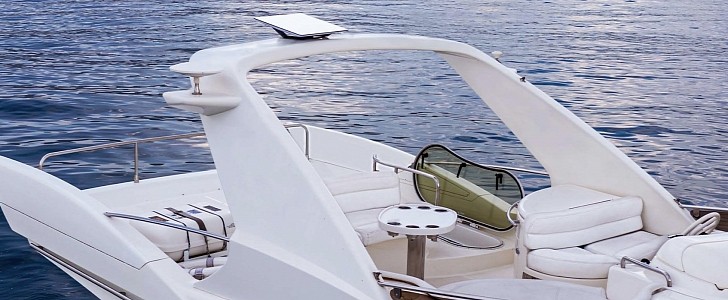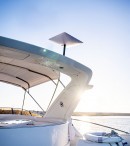When SpaceX announced the Starlink Maritime pricing, people were baffled by the high price of the new terminals, which ran at $10,000 for two dish antennae. This is twice as much per antenna as the high-performance version sold to businesses.
SpaceX has introduced a new Starlink dish antenna for Maritime users with impressive specifications. Still, we’re not getting why the company asks $5,000 per dish. Elon Musk claims that the new terminals can withstand hurricane winds and provide high-speed internet connectivity even on heavy seas.
The new antenna looks different from the ones we saw in previous pictures lined up on cruise ships’ decks. It has a different mount, enabling a unique rear design to match. Specification-wise, the new Maritime flat terminals are basically identical to the High-Performance terminals destined for the Starlink for Business plan users. These are also available to residential users willing to pay the steep $2,500 price of the terminal.
The only thing that appears to be different with the flat Maritime terminals is their capability to withstand winds as strong as 174 mph (280 kph). This may have nothing to do with their internal hardware, though. The solid mount and flat design would be enough to help with that. This hardly justifies the $2,500 price difference.
Although this is not specified, keeping the dish aligned with the satellites in rough seas requires heavy work from the antenna actuators. This is one area where the Starlink Maritime-specific terminals would need to be different, considering that high-performance residential antennae don’t need to re-adjust. But even so, the price would put off all customers but big companies which operate cruise ships.
If you think that this dish antenna is bonkers, you should know that Starlink also works to bring a more advanced terminal on the market geared toward the airline connectivity space. According to AV geek Jason Rabinowitz, this terminal would deliver 500 Mbps download and 50 Mbps upload speeds. The peak power specification indicates a 400-watt consumption, almost three times that of a regular or even Maritime high-performance antenna.
The new antenna looks different from the ones we saw in previous pictures lined up on cruise ships’ decks. It has a different mount, enabling a unique rear design to match. Specification-wise, the new Maritime flat terminals are basically identical to the High-Performance terminals destined for the Starlink for Business plan users. These are also available to residential users willing to pay the steep $2,500 price of the terminal.
The only thing that appears to be different with the flat Maritime terminals is their capability to withstand winds as strong as 174 mph (280 kph). This may have nothing to do with their internal hardware, though. The solid mount and flat design would be enough to help with that. This hardly justifies the $2,500 price difference.
Although this is not specified, keeping the dish aligned with the satellites in rough seas requires heavy work from the antenna actuators. This is one area where the Starlink Maritime-specific terminals would need to be different, considering that high-performance residential antennae don’t need to re-adjust. But even so, the price would put off all customers but big companies which operate cruise ships.
If you think that this dish antenna is bonkers, you should know that Starlink also works to bring a more advanced terminal on the market geared toward the airline connectivity space. According to AV geek Jason Rabinowitz, this terminal would deliver 500 Mbps download and 50 Mbps upload speeds. The peak power specification indicates a 400-watt consumption, almost three times that of a regular or even Maritime high-performance antenna.






